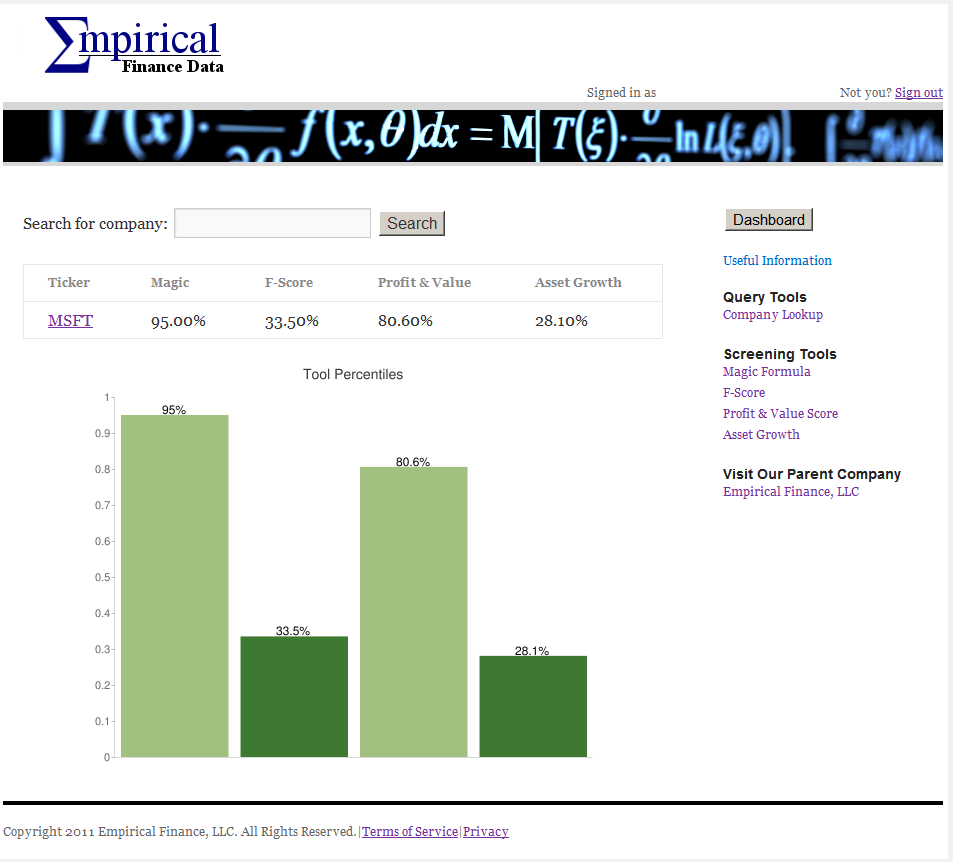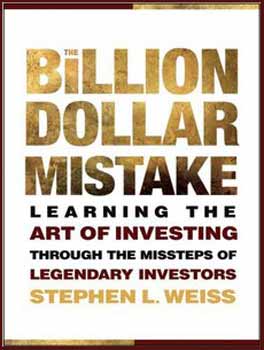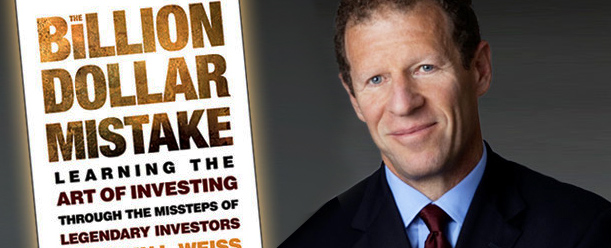This transcript is of a conversation I had with Mick Weinstein (listen to the podcast), previously the Editor in Chief of Seeking Alpha and presently the head of content at Covestor.
Miller: Hi! I’m Zack Miller, author of the recent book TradeStream Your Way to Profits: Building a Killer Portfolio in the Age of Social Media, and you’re listening to Tradestreaming Radio, our home in the internet radio space. This is our place to discuss how technology is helping investors to become better, smarter, and more accurate at what they do.
You can find this podcast on iTunes. You can also find lots of other material relating to this podcast, as well as archives of our programs at my website www.tradestreaming.com There’s lots of other great content there as well, and I recommend you check it out.
Today’s podcast includes a conversation with Mick Weinstein, I worked with Mick when I was at Seeking Alpha. Mick headed up their content initiative. He was the editor in chief, and managed the entire editorial staff. Mick recently joined Covestor, another company I write about in my book, TradeStream Your Way to Profits.
Covestor is an eBay of investment services of sorts. Investors can go there, open an account there, transfer money over, and then with the click of a button, allocate those funds to new and old aspiring investment advisors. So, it’s a transparent platform, investors can see exactly what they own at any given time, fees are transparent. Just like you would go to Schwab or to Fidelity to find a mutual fund, Covestor provides that level of service for the investment advisory industry.
We’ll just jump into the podcast, and we’ll take it from there.
I’m here with Mick Weinstein. Mick Weinstein is currently the head of content as Covestor, which I will let him tell you about. I’ve known Mick for years, Mick and I have worked together at Seeking Alpha, where Mick ran content as well, and managed the entire editorial process and team. I’d like Mick to introduce himself, and we’ll take it from there.
Weinstein: Thanks Zack, thanks for having me on the podcast. Before joining up at Seeking Alpha, in the early days of Seeking Alpha, I was working in online content. Sort of became active online as broadband was exploding, and things were getting really exciting for online content and access to it. The advent of the blog and the democratization of content creation, and broad distribution was already happening. I worked in both the business sphere and the non-profit sphere with online content.
And then I ran into my old friend David Jackson in, I think it was the summer of 2005. David was starting up this new company called Seeking Alpha, and he had a terrific vision of where it could go, and new possibilities in financial publishing. Built primarily around this new voice that was emerging of the individual, knowledgeable blogger about the market. And, it was very exciting opportunity, and David asked me to join up at that stage, and build up an editorial team.
Was it an issue that you didn’t have a traditional sort of investment/finance background?
Weinstein: I was always passionate about the market in sort of a individual investor sort of way. At that point, the way we saw it, it was more important to have editorial skills, strong communication skills, a strong vision of where things could go with this particular product, it was more important than knowledge of institutional investing and the like. There was a bit of a ramp up in knowledge that was required of me at that point.
It actually could have been and advantage, coming sort of with a different point of view.
Weinstein: Perhaps, yeah. It was, for me, a fascinating period of learning a new field, the institutional investor, the hedge funds crowd. I enjoyed that very much, and this was even before things got really interesting in 2007-2008.
Can you talk about the editorial process that Seeking Alpha used? How you built the content base, how you helped promote outside content? I think that’s kind of interesting.
Weinstein: Sure. Essentially at the beginning we were reaching out to some of the best financial bloggers out there, and inviting them to join up on the platform. David already had some relationships, and I built some relationships at that point with some of the early financial bloggers. I am thinking Roger Nusbaum was on board at that point, and some of the others who remain in the financial blogosphere remain active, and remain very popular.
We reached out and said what is happening, essentially, right now is that there is a lot of terrific writing from extremely knowledgeable people with real domain expertise that far exceeds, in many cases, what we can find on even the Wall Street Journal and Bloomberg reporters, because of the nature of their beat. But the problem is that no one knows about you, and you know that.
Financial bloggers’ perspective, in many cases, was very frustrating, they were doing terrific write ups on whatever the topic of the day was. They were writing because they wanted to write. They were writing because they were passionate about it, not because they had to file today. The content was coming from a really compelling viewpoint.
And they were putting their money behind some of these ideas, right?
Weinstein: In many cases, in many cases. Every aspect of it was compelling from a reader’s perspective. But the distribution just wasn’t there, and part of the problem with the distribution was that the filtering wasn’t there. No one would want to distribute it before strong filtering was in place to ensure quality and to ensure the ability to sort of follow up with the writer if an issue were to occur; quality in terms of the core production and quality in terms of the copy editing, tagging, headlines, the whole package.
We would reach out to the best bloggers at that point, and sort of hand pick them, and invite them to join up. Essentially, it formed a partnership around distribution of their content, and it worked remarkably well, with very rare exception, everyone was excited to join up with this new project that costs them nothing in terms of new work, but was all upside in terms of distribution.
In many cases, we were talking about a fund manager, let’s say, who was writing primarily either because they found it very interesting just to get their ideas out there and to get feedback from the community in comments and the like, or to market their business, and to get their name out there, to get their firm out there, to get their asset management services out there. Increased distribution was what they were interested in, exposure, and not so much to be compensated directly for their writing. It was a good arrangement all around.
You had hired and managed an internal, human team of editors to help sort of- this is the next stage of the process, you’ve identified that manager, that blogger, can you talk about what would happen at that point, once he’s written an article?
Weinstein: Sure. At the beginning it was just me taking these articles that were coming in, and there weren’t that many at the beginning, so it was something that I could handle on my own. But to scale things, and when things started really to flow, and when we started to get incoming requests to be on the platform, as opposed to our outgoing requests, we needed to scale editorially. So I began hiring editors with backgrounds more or less like my own, which is not financial expertise, but rather strong editorial abilities, web native types who had been blogging, were comfortable with content management systems, strong communication abilities, and could learn finance.
I always preferred hiring someone who was a lover of language, and enjoyed working in an editorial capacity who could learn finance and investing. I much preferred that approach to someone who had worked in finance/investing, but wasn’t strong editorially. I think you can teach finance and investing to a strong editor, but I don’t want to be teaching strong writing skills and editorial skills to someone who’s been working in finance and doesn’t have them already by the time they’re in their late 20’s or early 30’s. let’s say.
I think that helped, at least from my perspective, and part of what made Seeking Alpha so fresh was that the content was different than what else was out there. It was not dry, it wasn’t sort of onerous in the sense of just being written in a very sort of academic tone. It was very accessible.
Weinstein: Yeah right, like I said before, what was exciting about working with this content was, and continues to be I think you see on Seeking Alpha, people write because they want to, they write because they know about the field. If they have two things to say today, they write two blog posts, if they have nothing they write nothing. Everything, therefore, tends to lean towards quality. It’s a voice that you want to hear if you are active in the market yourself.
So, was a fresh voice, and that was broadly recognized, I think, from the mainstream media outlets also, that were lacking that at that point. And in many cases, still struggle with that. The voice from nowhere of the objective reporter is only so interesting when you talk about stocks and investing. At very least, to compliment that, the voice of the investor, talking from an informed, skin in the game perspective goes a long way.
You just got me thinking, so last podcast, I spoke with Nikesh Desai, whom I think you know. He used to run business development at TheStreet.com . Obviously, TheStreet.com has been taking outside content, third party content for years, certainly before Seeking Alpha was. But Seeking Alpha somehow sort of perfected that model and sort of ran away with the third party aggregated content model. Any reason why you think Seeking Alpha had a leg up in that race against TheStreet?
Weinstein: Not necessarily, I think TheStreet and MarketWatch, which were both pioneers in the late ‘90s in bringing financial content online, just didn’t get what it meant with the explosion of terrific content from individual bloggers and other types of content that became available outside of traditional journalistic frameworks. They were just late to respond to that.
And there is no reason why I think they could not have done it also. But I think David just saw sort of saw it earlier because he was in it, he was a blogger himself, and took the initiative and ran with it. I think what you find is that traditional media outlets, whether it’s an internet company, a net native company like the TheStreet or MarketWatch, or a company that has its roots in traditional print like the Wall Street Journal, Reuters, etc., companies get entrenched in their own way of doing things.
They have teams on board that they’ve built out that work within particular frameworks. They think of creating new content, they don’t think of changing that basic framework. And you still see it, the difficulties that traditional mainstream media outlets, even though the want, even though the are in principle committed to working in an online environment, it takes a long time and a culture change to think about content coming from someone who was previously a source, actually that being the source of the content that you publish and not just as a one off, but as a fundamental change to the business model, doesn’t happen so quickly, and I think they kind of missed it on that.
So it’s natural, but I think that’s the nature of start ups. A start up can come up with a whole fresh approach, that any people onboard…
Sort of freed from the organizational constraints?
Weinstein: Exactly. That’s what occurred here, and as there’s greater recognition of the value of the blogger content, it’s interesting to see how the traditional mainstream media outlets are dealing with that. Whether it’s curating links from strong voices out there on the web, or in some cases hiring some of those bloggers to come on board and become part of their large organization, which is an exciting avenue for a financial blogger, for example who wants as a career move to become a writer, as opposed to sort of augment their money management business, or other profile like that.
Can you talk about volume? How many posts you were posting per day by the time you left?
Weinstein: Yeah. By the time I left last spring, we were north of 200 posts per day. I just looked yesterday that Seeking Alpha and Business Insider are both- Business Insider now is close to what Seeking Alpha’s output is. I thought that was interesting. They’ve really ramped up their volume there. That’s the nature of the business if you’re in that. The free content, ad-supported model, so for better or for worse, you need to have few things, and one of them is high volume.
We knew that early on at Seeking Alpha, that we needed to ramp up the contributor base. We were over 3,000 contributors over the lifetime of Seeking Alpha at the time I left, in terms of active contributors also, hundreds of active contributors; a large editorial team handling that, 15-17 editors. It was a big operation, and it had to for it to be a scalable web business in that model.
It’s funny that you say it had to be a large operation to be scalable, but that’s true. People have been writing about that. The great internet companies that are coming out that are actually pre-public at this point, they are investing a lot in infrastructure. It’s not that they are just a team of five guys being able to generate lots of money, it actually requires an increasing amount of investment, right?
Weinstein: Absolutely. I mean on the one hand, there’s misunderstanding about that, that it doesn’t cost as much to build an internet business as it once did, that’s true. But it’s still substantial, and we’re not talking about four or five people. To build a content business that reaches a certain scale, you need the sort of numbers at least that we had at Seeking Alpha.
On the other hand, when you compare it to the larger publishers, and with the traditional newspaper, and the mainstream publications, their overhead, there’s nothing to compare. If you build out the company carefully, a blogging model like the Seeking Alpha model or the Business Insider model, you still have a relatively small team, but you’re talking, editorially, still in the 15-20 people. If you want to reach the sort of numbers that turn into an interesting business.
So before we leave Seeking Alpha, and start talking about what you’re working on now, you touched on this before, can you talk a little bit more about why financial bloggers are blogging? And how they are using Seeking Alpha personally and professionally?
Weinstein: Sure, there are a few different profiles of the financial blogger, I think. In the Seeking Alpha universe, I’d say the largest profile is the money manager or financial professional in some capacity, could be a portfolio manager, could be an RIA, who is writing because they are looking for distribution of their ideas and their name, and ultimately for new client leads. That’s one profile.
Another big profile at Seeking Alpha is just the passionate individual investor who enjoys the process of writing up their ideas around the stocks they own, or it could also be macro ideas. Someone who is smart, writes well, and just enjoys that process, and is in it more for the community aspect. That is, for the thrill of writing something that you invest in, and then to get feedback from people.
It is a real thrill, and it can be addictive. I’ve experienced it myself. It’s a lot of fun to get feedback from people after you’ve put a lot of thought and effort into a piece. And getting that feedback, knowing that you have many people reading it, responding to it, who can follow up on, smart people who improve your thinking through their feedback, and the community around that. So that’s the second profile right there.
Are those types of people looking to make money? Do they have a day job, are they doing something different with their lives? Is it more of a hobby?
Weinstein: Yeah, for the most. I think they are looking to make money, but also just enjoy the process, and enjoy the discussion that happens, just like talking stocks, like sharing ideas around it. Like expressing themselves and hearing what others think about that.
And you started to say there was a third type?
Weinstein: Yeah, there are other profiles. There’s the professional, mainstream media or otherwise, the professional writer, who we were also taking on at Seeking Alpha. Who writes for, whether it’s a CNET, or someone like Felix Salmon, who was at Portfolio, and moved over to Reuters. And we had other deals in place with professional writers, we would carry tech crunch content.
These are people with domain expertise, who are writing as their profession. In that case, it made sense as a biz dev relationship for both sides, for their distribution and for us to have rich content like that. But didn’t really fall into either of those two profiles, so I just grabbed a…
I’ve seen recently that Seeking Alpha, from a monetization point of view, has moved into this sort of online app store, which I was writing about a year ago, and I mentioned in my book. I know it’s early days, and they’re doing some interesting things there. I have certainly heard from app developers that they are banking a lot on the success of this type of platform. StockTwits also launched a story recently.
Do you see that as an extension of sort of content, or is that just way for these companies to monetizes their content? Or is it just another vehicle for content just delivered via an app?
Weinstein: I think it’s really interesting. I think what’s happening is content start ups hit a certain ceiling, in terms of where the scaling becomes difficult to continue. That is, at a certain point in terms of your own team, and in terms of the content you’re bringing in, and in terms of the distribution you’re getting, and the visitors and the page views, things start to kind of maximum let’s say.
Like is it based on page view models?
Weinstein: It’s all about page views and selling those page views for the best rate you can on a CPM basis. So, you can have a terrific sales team in place, but at a certain point there’s only so much you can do in terms of your own output, without getting really annoying to the user with the more and more sort of hypey headlines.
Or splitting up pages and multiple-
Weinstein: Splitting up pages, and at a certain point, there are diminishing returns on that too. The users just get upset and leave. You can keep trying it, and you can do the, what’s it called at the Business Insider all the time? The slideshows. Like, “Ten ways to do…” this and that. You can try to branch out into the birds dying in the sky and falling and saying well, that’s still somehow business news.
But there’s still only so much you can do to grow your page views, without hitting the user in a way that undermines that growth. What do you do then, as a business? You can only drive the CPM so high, where does your growth come from at that point? You can launch new verticals, you can do conferences, sort of the tech crunch model, take the brand to the real world.
Jobs?
Weinstein: You can do jobs, there’s not a whole lot of money there. Another approach is to try to sell products on the site, essentially, and to create a platform. I think it’s really interesting. I think any effort to create a second revenue stream for a content, ad-based revenue model for a content business is interesting. Everyone is struggling to find one that works, and that really can produce real growth, that is interesting from the companies’ perspective and from a venture capitalist perspective.
The Seeking Alpha app store is a really interesting development, and I don’t know how it’s working out for them, but StockTwits also is taking that approach. Platform also has it’s attractive upside, you could say it’s a natural extension of the basic content model also, which is platform based.
But does it work to sell content on your closed platform, in the Facebook model?
The Apple model, yeah.
Weinstein: Yeah, in the Apple model, if you’re not Facebook or Apple? If you don’t have that massive user base that just loves being on your site or with your products, is it going to work to sell content on your platform? I think that’s the big question for Seeking Alpha, and maybe also for StockTwits, I don’t know.
That’s a great point, and I think that’s also a great segue into talking about what you are doing now. I know years ago there was talk that some of these next generation investment platforms, like a Covestor, or a KaChing, which is now called Wealthfront, would sort of be that revenue model for the financial blogger, right? If these models allow any content producer, theoretically, to put up a portfolio, put some real money behind it and have people invest along side this person, with audited results and basically to create a new model for punditry basically. No longer is a writer just a writer, you actually have performance metrics attached to it, and people can invest along side this person.
I don’t think it ever panned out that way, I don’t think that Covestor necessarily turned into the revenue model for the financial blogger. I think it’s a stand alone business that’s interesting in and of itself. Can you talk about Covestor, and what you are working on now, and where Covestor is headed?
Weinstein: Sure. I was really thrilled to join up with the Covestor team, it’s obviously a bit of a jump for me from a publisher to an investment management company. But I remember when Covestor launched, the excitement around it. The idea of using the internet as a means to empower individuals to both express themselves and to attract customers in however that’s defined, in new and novel business channels is what Covestor is doing. What’s happening in many other spheres in terms of people being able to express themselves, whether it’s just through the writing, or through their products, and to find access to customers around the world, who they wouldn’t otherwise have access to. And, thereby pushing aside some of the large initial players in the field. That’s very exciting to me, generally, online.
And that’s what Covestor is doing in investment management. The ability to share your own portfolio in a verified manner. I know that the person really holds those stocks, and show the track record in a verified manner. My ability, if I am interested in active investing, that is I am interested in not just following an index or following the general market, but either for a portion of my portfolio or my entire portfolio, active management, to have access to a whole marketplace of managers who are competing for my business, rather than just some un-named, faceless mutual fund or other vehicle, is compelling, I think. That’s what Covestor offers.
At this point, what I’m doing is working with a team there, a terrific team out of London and New York to build not just from the existing product, which is solid and works well, but to develop content around the managers, and around the service that will both express better the managers’ unique portfolio, strategies, and the like, and their own backgrounds, and also create compelling content around their trading, around their portfolios, that some one who is just interested in that aspect of it can access the platform.
That’s a really interesting jump to go from, to truly have achieved sort of an expertise in financial content, to go from a publisher to actually the investment side. Can you talk about that transition, and about the nature of content changes if it’s used to deliver page views, or it’s actually used as the opening of a sales funnel?
Weinstein: Sure. As a publisher, when working the publishing framework, you always sort of have your mind on creating compelling content for an end user, but also on the business end of things for the company, which is about volume, page views, and providing inventory for the sales team. Quality inventory is sort of the bottom line.
The aspect, the first part of that, which is creating compelling content for the end user, is applicable anywhere. It’s very much what I am taking with me to Covestor. We must produce, regardless of the web framework you are working in, if you are working in online content, you have to produce something that has real tangible value to people on a regular basis, that really meets their needs. And there’s no room for mediocrity really, in that regard.
Any interesting business that you are going to build on top of that, whether it’s a publishing business that’s ad-supported, or an investment management business that’s using content as part of its overall strategy. There’s no sacrificing the quality around that content. You really need to understand who the end user is, and you really need to provide that daily, quality, and direct.
That challenge is present here at Covestor, just as it was at Seeking Alpha. That said, obviously I am part of an investment management firm here, which has regulatory considerations. I am still learning all of the aspects of that. Things that you can say-
You wouldn’t wish that on your enemies, right?
Weinstein: A lot of it makes sense, and is out to protect people for all the right reasons. Other parts I am trying to understand exactly how to work within the framework in a way that both meets compliance, and is genuinely interesting and informative really, to a end user without getting too cumbersome.
The quality, the focus on quality content is very much still there. It’s just a question of what you are expressing. We have a lot of outstanding money managers on the platform at Covestor. They’re writing terrific stuff in many cases, and their activity is very interesting. This is what we’re trying to amplify through our content on the platform. And in that regard, it’s not that different from what I was doing at Seeking Alpha, in working with a relatively large body of content producers to express better, and more broadly, how they see the market, and how that effects their own investing.
The main difference is, being the platform itself, you are able to track the conversion rate and the lead generation in a way that you are handing that off to a third party manager, who is writing for Seeking Alpha, right? Now you actually have soup to nuts right? The whole process, from a track-ability or an analytics point of view, you have the whole exchange, which I think is kind of interesting.
Weinstein: Yeah, that is.
Do you think that the rise of Covestor, and the success of Covestor- obviously it’s still early days- that we are seeing a new form of financial startup, meaning moving away from the MarketWatches and the Seeking Alphas, which were purely content exchanges in some way, and moving more into a transactional type of platforms? I can think of Betterment, I can think of AlphaClone, sites that use content, but actually have some type of mechanism to either actually manage money, or there’s some transaction going on at the end point. Do you think we’ve reached that stage now, that maturity in the start up field?
Weinstein: I think they’ll coexist. I think content consumers will continue to want different things in their daily reading. They will want sources that are purely exchange of ideas based, whether it’s a blogger who is independent, or a Wall Street Journal, or Seeking Alpha that is a publisher. It’s understood that it’s a place where you come to hear ideas, and exchange ideas, but there is no incentive on the part of the publisher other than attracting your eyeballs, and selling that to advertisers. There’s no financial incentive, there’s no interest in presenting product to you in terms of investment.
Then there will be investment advisors and platforms like Covestor, which are quite clearly with a different product at the end that is right for some consumers. And the content that you consume may or may not draw you to purchase the product or to become a client of the service, but the content itself may still be compelling to you, and your awareness of that service grows as a result.
I think the two will co-exist. I don’t think the investment management content producers will have the resources, or will be interested in all the business aspects of creating the idea exchange that you find on the publishing end. I don’t think that the publishers can produce the investment management products and deal with all of the regulatory aspects of that, and the product and operation aspects of that which are necessary for operation. I think that will coexist.
That leads to my last question, I always though of the holy grail as the merger between those two. If you could find somebody who was really good at creating objectified, agenda-less, or agenda-free content and combining that with an actual transactional platform, that somehow that would be the best of both worlds.
And there have been some attempts, some of the newer start up brokerages tried to use content and provide a pathway through the content to actually transact off of it. None of which has really resulted in moving the needle much. Maybe what you are saying is that those two things actually have to be separate.
Weinstein: Yeah, I am not convinced,-I think it would be interesting to see such a combination. In some ways, I am skeptical that it is the future for financial content. We once had the Chinese wall between editorial and sales, in that you see publishers online. I can tell you all inline financial editors are influenced by aspects of sales and advertising; some more than others.
That may have therefore- not fallen- but it’s a good wall to have in place. It’s important for the integrity of the publisher. I wonder if a financial publisher who was answering not just to an ad sales team, but to an asset management team could move ahead in the way editorially you need to make things interesting for an end user with that intention. If the tend user would be interested ultimately in that tension built into the model. I’m not convinced.
Mick, this has been really, really great. It’s been great talking shop with you, and I appreciate your time and wish you the best of luck at Covestor.
Weinstein: Thanks a lot, Zack.
So that was Mick Weinstein talking about financial content, both in a publishing model and in a purely financial model, using content actually to create lead generation for financial advisory services. I hope that was interesting.
Again, you can check out this podcast on my blog at www.tradestreaming.com , we are also at iTunes, look for us again soon, thanks for joining us.
More Resources
Learn more about Covestor and Mick Weinstein











 strategy, I was sure. Oh, was I sure. But now? I dunno. Am I headed in the right direction? Is volatility too much for me?
strategy, I was sure. Oh, was I sure. But now? I dunno. Am I headed in the right direction? Is volatility too much for me?






